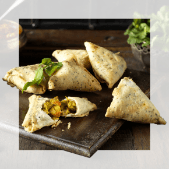Bavaria provides the backdrop to some of the most chilling of folk tales – from Krampus, the horned creature that scares naughty children, to the terrifying tatzelwurm, a lizard beast with the face of a cat and poisonous breath.
The inspiration for many of the Brothers Grimm tales, even today its medieval streets and castles are capable of transporting you back to a time when wicked witches and hobgoblins lurked in the forests and caves.
And it was from one of these caves, 200 years ago, that a true, real legend appeared, one that is celebrated today across the world – lager.
So, to mark National Lager Day, that falls on December 10, let’s raise a glass to Bavaria – birthplace of the golden nectar.
Brewing had been known to mankind for centuries before the brewers of Bavaria made their breakthrough. Instead of the usual beer making process, using top fermenting yeast in warm conditions, they used bottom-fermenting yeast with their barley, hops and water. This was packed in ice gathered from nearby Alpine lakes and mountains and stored over summer in caves.
No probably about it, this resulted in definitely the first lager in the world – taking its name from the German word “lagern” meaning to store.
The brewing purity laws of Bavaria ensured only the finest water, barley, hops and yeast could be used and this longer brewing period meant sediment settled at the bottom, leaving a drink with a clean taste and paler colour than the traditional dark beers.
These Dunkel beers are still produced but there was one more important step before the brewers arrived at the lager we know today.
In 1842 the Bavarian brewer Josef Groll travelled to the town of Plzen in Bohemia – now in the Czech Republic – and found that the softer water of the region and the low protein local barley resulted in a golden beer.
This “Pilsner” lager became the daddy of all lagers – giving birth to the likes of Carlsberg and Heineken and the giant US breweries of Budweiser, Miller and Michelob.
And though lager is now produced in countries across the globe, the Bavarian influence remains. Because the more lager you drink, the more likely it is that your truth will merge with myth and fairytales blend with facts.
You might also be wondering what lager has to do with food. Well, on this case it will pair perfectly with the following recipe which has has dark ale in it, so it’s win, win really!
Braised oxtail with roasted onions, risotto
For the braised oxtail
- 3 beef cheeks, sinew removed
- 500ml dark ale
- 2 garlic cloves
- 1 bunch fresh thyme
- 1 bay leaf
- 750ml beef stock
For the malted onions
- 500ml dark ale
- 3 small white onions , unpeeled
- olive oil
- 25g butter
For the risotto
- 1 ¼l chicken stock
- 250g Arborio rice
- 6 garlic cloves
- 300ml double cream
- 50g grated parmesan
- few drops lemon juice
Put the oxtail in a dish, cover with the ale and add the garlic, thyme and bay leaf, then leave to marinate for at least 6 hrs – or overnight.
Heat oven to 140C/120C fan/gas 1. Strain off the oxtail and transfer the marinating liquid, garlic and herbs to a large flameproof casserole dish and bring to the boil. In a frying pan, brown the beef cheeks in a little oil until caramelised on both sides. Add the oxtail to the casserole dish with the marinade and pour in enough beef stock to cover. Bring to the boil, cover, then braise in the oven for 4 hrs until the oxtail are very tender. Every so often, skim off any fat from the surface to keep the stock clean.
While the beef is in the oven, make the malted onions. Put the ale in a frying pan, add the whole onions, cover and simmer until the onions are tender, about 20 mins. Leave to cool completely, then remove the skin and slice the onions into sixths and set aside.
Once the beef is cooked, remove the oxtail, herbs and garlic and set aside, then reduce the stock rapidly until it is syrupy. Return the cheeks to the pan and glaze with the sticky reduction, then keep warm until needed.
Roughly 40 mins before you’re ready to serve, make the risotto. Put the chicken stock in a large pan and bring it to the boil. Add the barley, then cook for 15 mins. Remove from the heat, strain, then tip the barley into a medium-sized pan.
Place the garlic in a small pan with the double cream and bring to the boil. Simmer for 3 mins, then transfer to a food processor and blend until smooth. Set aside about 50ml of the garlic cream and pour the remainder over the barley. Keep warm over a low heat.
Meanwhile, separate the layers of malted onions and finish by frying in a hot pan, with a little oil and butter, until golden.
Just before serving, add the Parmesan and lemon juice to the barley risotto and salt, to taste. Spoon on to the centre of each plate, then slice the oxtail and arrange on top of the risotto. Place 3 malted onion wedges around the side and drizzle over the reduced ale stock.






